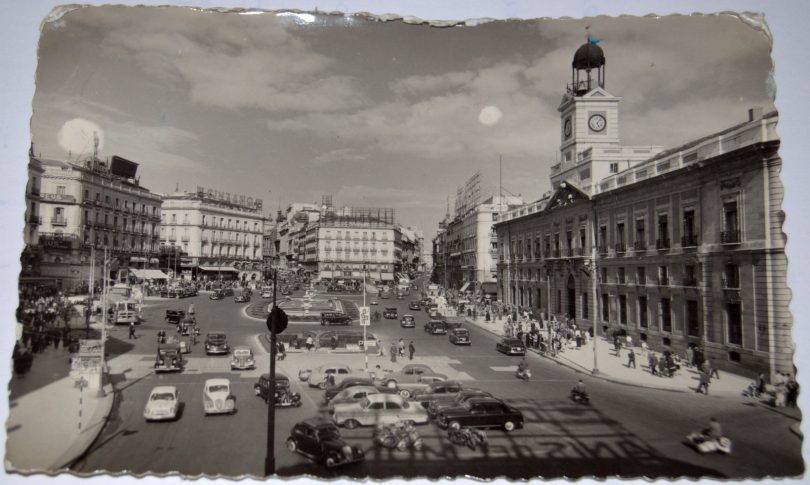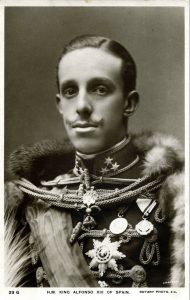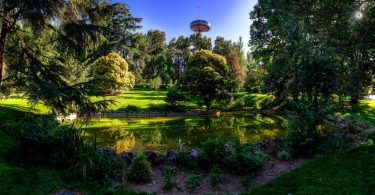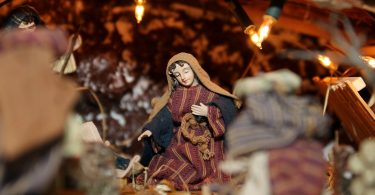While Madrid possesses a pretty modern infrastructure, it has preserved the look and feel of many of its historic neighbourhoods and streets. Among its many landmarks, you can find the Royal Palace of Madrid, the Puerta del Sol, and Plaza de España. Over the years some of the emblematic landmarks have changed whilst others have almost stayed the same. In this article, you can see the changes these famous landmarks have experienced over the last 60 years.

The Puerta del Sol (Spanish for “Gate of the Sun”) is one of the best known and busiest places in Madrid. This is the centre (Km 0) of the radial network of Spanish roads. The square also contains the famous clock whose bells mark the traditional eating of the Twelve Grapes and the beginning of a new year. The New Year’s celebration has been broadcast live on national television since December 31, 1962.
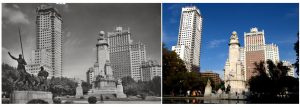
Plaza de España (or “Spain Square” in English) is a large square, and popular tourist destination, located in central Madrid, at the western end of the Gran Vía. It features a monument to Miguel de Cervantes Saavedra, and is bordered by two of Madrid’s most prominent skyscrapers. On the picture, you can see the Don Quixote monument has changed places and that there used to be wide path in-between the two monuments.

The Sabatini Gardens (in Spanish: Jardines de Sabatini) are part of the Royal Palace in Madrid, Spain, and were opened to the public by King Juan Carlos I in 1978. They honor the name of Francesco Sabatini (1722–1797), an Italian architect of the 18th century who designed the garden. The gardens have a formal Neoclassic style, consisting of well-sheared hedges, in symmetric geometrical patterns, adorned with a pool, statues, and fountains, with trees also arranged in a symmetrical geometric shape.
The statues are those of Spanish kings, not intended originally to even grace a garden, but originally they were meant to be placed on top of the palace but as they weighted too much they were finally placed below. On the new picture, you can also see the Torre de Madrid that measures 142 metres in height, has 36 floors and was constructed between 1954 and 1957.
The Palacio Real de Madrid (literally: Royal Palace of Madrid) is the official residence of the Spanish Royal Family at the city of Madrid, but is only used for state ceremonies. King Felipe VI and the Royal Family do not reside in the palace, choosing instead the more modest Palacio de la Zarzuela on the outskirts of Madrid. The palace is owned by the Spanish State and administered by the Patrimonio Nacional, a public agency of the Ministry of the Presidency.
Long before Madrid became the capital of Spain, Emir Mohamed I chose Magerit (the city’s Arabic name) as the site for a fortress to protect Toledo from the advancing Christians. The building was eventually used by the Kings of Castille until finally becoming what would be known as the Antiguo Alcázar (Old Fortress) in the 14th century. Charles I and his son Philip II turned the building into a permanent residence for the Spanish royal family. However, in 1734 a fire burnt the Palace of the Austrias to the ground, and Philip V ordered the construction of the palace that stands today.
Construction spanned the years 1738 to 1755 and followed a Berniniesque design by Filippo Juvarra and Giovanni Battista Sacchetti in cooperation with Ventura Rodríguez, Francesco Sabatini, and Martín Sarmiento. Charles III first occupied the new palace in 1764.
The last monarch who lived continuously in the palace was Alfonso XIII, although Manuel Azaña, president of the Second Republic, also inhabited it, making him the last head of state to do so. During that period the palace was known as “Palacio Nacional”. There is still a room next to the Real Capilla, which is known by the name “Office of Azaña”.
